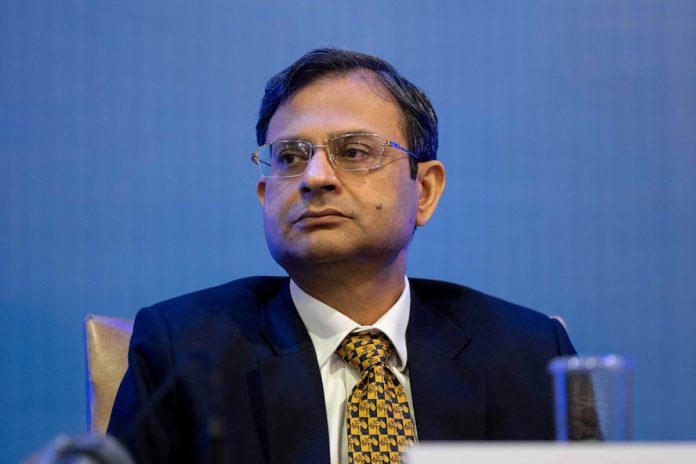India’s newly appointed central bank governor, Sanjay Malhotra, is expected to implement an interest rate cut during his first policy meeting, shifting the Reserve Bank of India’s (RBI) focus toward bolstering economic growth amid rising global risks.
Having taken office in mid-December, Malhotra is likely to break away from the hawkish stance of his predecessor, Shaktikanta Das, who maintained stable interest rates for two years to pursue a 4% inflation target. Economists surveyed by Bloomberg predict a benchmark repurchase rate reduction of at least 25 basis points to 6.25% this Friday, with some analysts speculating a more aggressive cut of 50 basis points.
Malhotra will preside over a newly constituted six-member Monetary Policy Committee (MPC), with Deputy Governor M. Rajeshwar Rao temporarily replacing Michael Patra, who recently retired. Three external members also joined the MPC in October.
A seasoned bureaucrat and former revenue secretary at the Ministry of Finance, Malhotra has yet to make any public statements since his appointment, making his views on inflation and the currency difficult to discern. However, insiders suggest he may favor a more hands-off approach to the rupee, signaling a willingness to let it weaken alongside global currencies.
Economic pressures and global market turbulence, including new tariff threats from U.S. President Donald Trump, provide additional justification for a rate cut. A reduction would follow last week’s record $12 billion tax cuts announced in Prime Minister Narendra Modi’s budget to stimulate growth.
Monetary Policy Outlook
Kaushik Das, Deutsche Bank’s chief economist for India, emphasized that “monetary policy will need to shoulder the burden of supporting growth in 2025 and beyond.” Failure to act could result in “falling behind the curve,” he warned. Malhotra is set to announce the policy decision at 10 a.m. in a televised address from Mumbai.
Rate Strategy
Analysts will closely scrutinize Malhotra’s policy statement and press conference for signs of adherence to the previous inflation target and indications about the extent of the potential easing cycle. While many economists agree on a pivot, opinions differ on the depth of the rate cuts. JPMorgan Chase’s Sajjid Chinoy anticipates prolonged cuts in 25-basis-point increments if financial conditions remain stable.
Chinoy noted, “With growth at a four-year low and inflation stabilizing around 4.5%, the RBI has room for monetary policy easing.” Some, like Barclays’ Aastha Gudwani, predict a shift to an “accommodative” policy stance from the current “neutral” position.
Rupee Volatility
Malhotra’s stance on the rupee will be closely monitored. Under Das, the RBI tightly managed the currency, accumulating over $700 billion in foreign exchange reserves. Since Malhotra’s appointment, the rupee has depreciated over 3% against the dollar, marking increased volatility.
Nonetheless, the central bank is expected to maintain its approach of smoothing volatility without targeting specific exchange rate levels.
Bonds and Liquidity
Following a liquidity injection of nearly $18 billion last month, swap rates have priced in a 25-basis-point rate cut. However, the banking system continues to face liquidity challenges, with a cash shortfall peaking at Rs 3.3 trillion ($37.9 billion). While the shortfall has eased to Rs 60,000 crore, further liquidity measures may be necessary.
Suyash Choudhary, head of fixed income at Bandhan AMC Ltd., noted, “RBI’s recent liquidity efforts are proactive, but more is needed to ensure any rate cut effectively lowers lending rates.”

